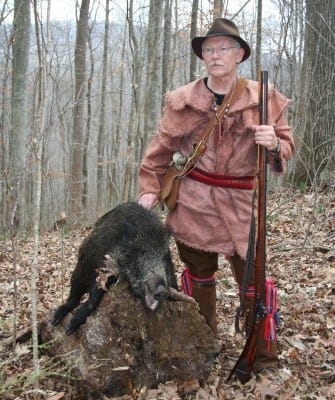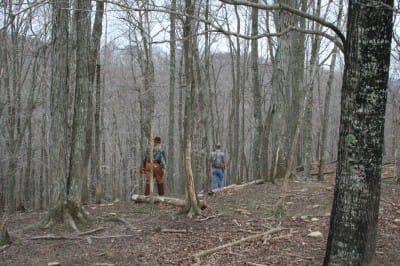
Depending on your perspective, wild hogs are either grand creatures of the woods and fields or a certain curse intent upon destruction.
True, they are destructive. They root up the landscape and eat just about everything they can get their loathsome snouts on. They reproduce at incredible rates and compete with native wildlife. They can be problematic. However, from a hunter’s standpoint they are a superb quarry, available in good number practically all across the U.S. And they can often be hunted when and where other game can’t. Landowners who would otherwise refuse to let hunters on their property will often welcome those who are looking for hogs. One thing is for sure—wild hogs are here to stay.

Not native to North America, hogs were brought from Europe as a food source for early settlers. Some of these animals were penned and kept close at hand; others were turned loose to roam free. They have now spread to practically every area of this country and promise to do even more populating into areas without them. Bad news perhaps for other game, landowners, and property managers; good news for those who understand the thrill of chasing these cunning beasts.
Regarding the hunting of wild hogs, these animals are challenging. They are far removed from their docile, domesticated, overweight cousins with which most people are familiar. Wild hogs are intelligent, and the smallest amount of pressure and disturbance can send them scurrying into cover too thick to negotiate by any sane person. And they will stay there until darkness covers their haunts. No pushovers, these critters.
Hunting hogs can take many forms. The traditional dog chase works well, and it is a thrilling endeavor. So is spot-and-stalk hunting. This is a common approach when and where hogs frequent open fields, scrub brush, mountain sides, and hardwood bottoms. And hogs can be hunted much like deer – from a tree stand overlooking a food source or trail leading to that food. I have participated in each method and found all to my liking.
And not unlike deer, hogs tend to move best at dawn and dusk. The wise hunter will be stationed in a likely spot before the sun comes up and will be back there an hour or so before it drops beneath the horizon. And that same wise hunter will be ever mindful noise and wind direction. Hogs lack a little in the eyesight department, but they make up the deficit in hearing and smell. One errant clanking of metal or one tiny breeze that sends human smell into the bush and the hunt is over.
What are the proper tools for hunting hogs? That is a topic open to debate, but just about anything that serves well for deer works in like fashion for hogs. I do, however, prefer to go heavy with bullets when shooting a rifle or handgun. Those old favorites like .30-30, .30-06, and .308 work wonders. In handguns, the .44 magnum is the top choice, but with so many even bigger, harder-hitting calibers available today, the choice is broad. I have a strong tendency toward the more primitive firearms–and bows –and often opt for a flintlock rifle. The one I use is .54 caliber and speaks with authority.

Pretty much the same can be said of archery gear. Use the heaviest bow you can shoot well and select a strong, cut-on-contact broadhead. My longbows and selfbows draw from 55 to 60 pounds at 28 inches, and with a heavy arrow in the 500-grain range tipped with a sharp broadhead, these bows will usually give complete penetration.
Blessing or curse? That depends upon how you view them. But wild hogs are abundant and afford extensive hunting opportunities. If you haven’t tried them, perhaps you should. Be assured that they are simply too good to miss.







